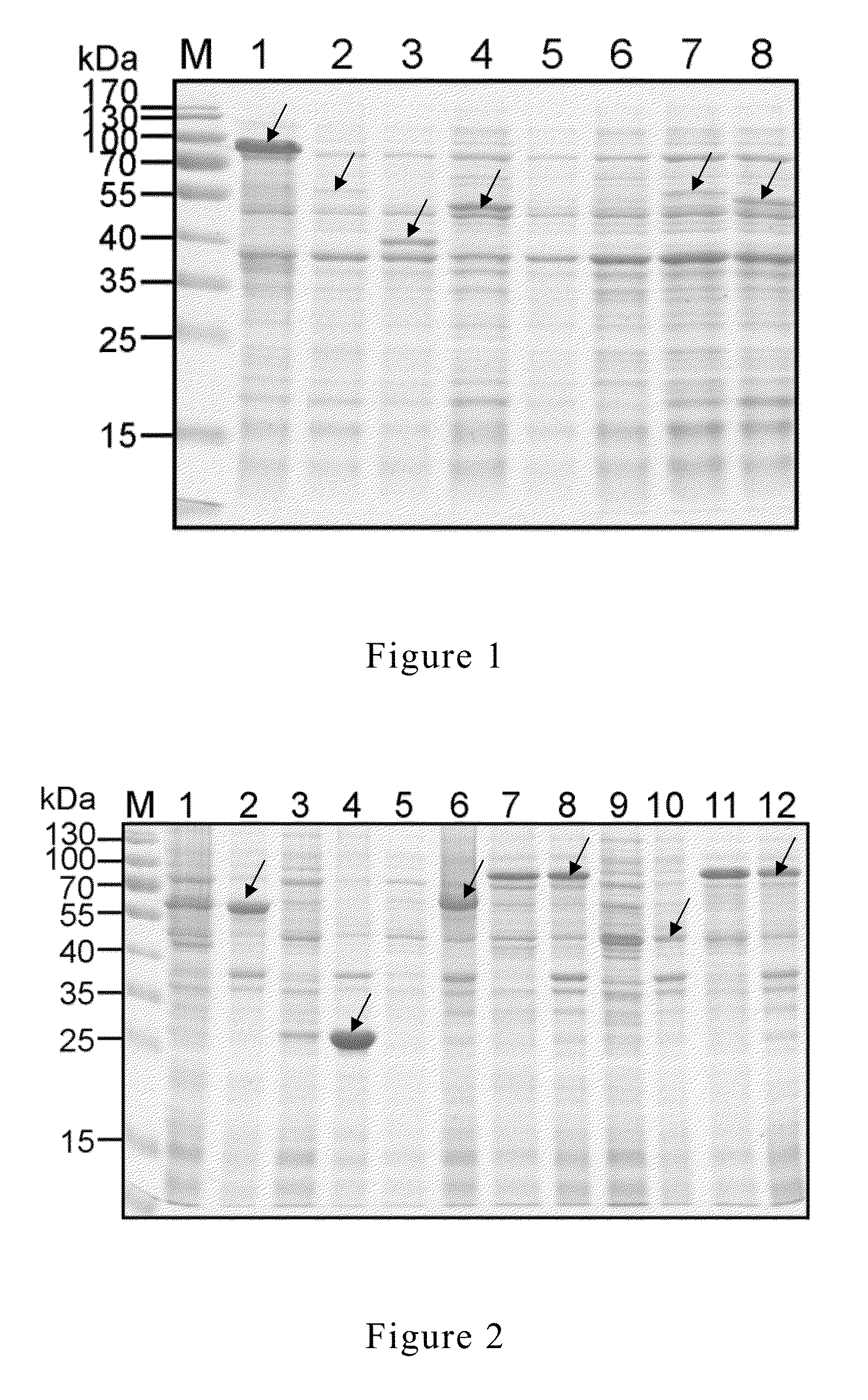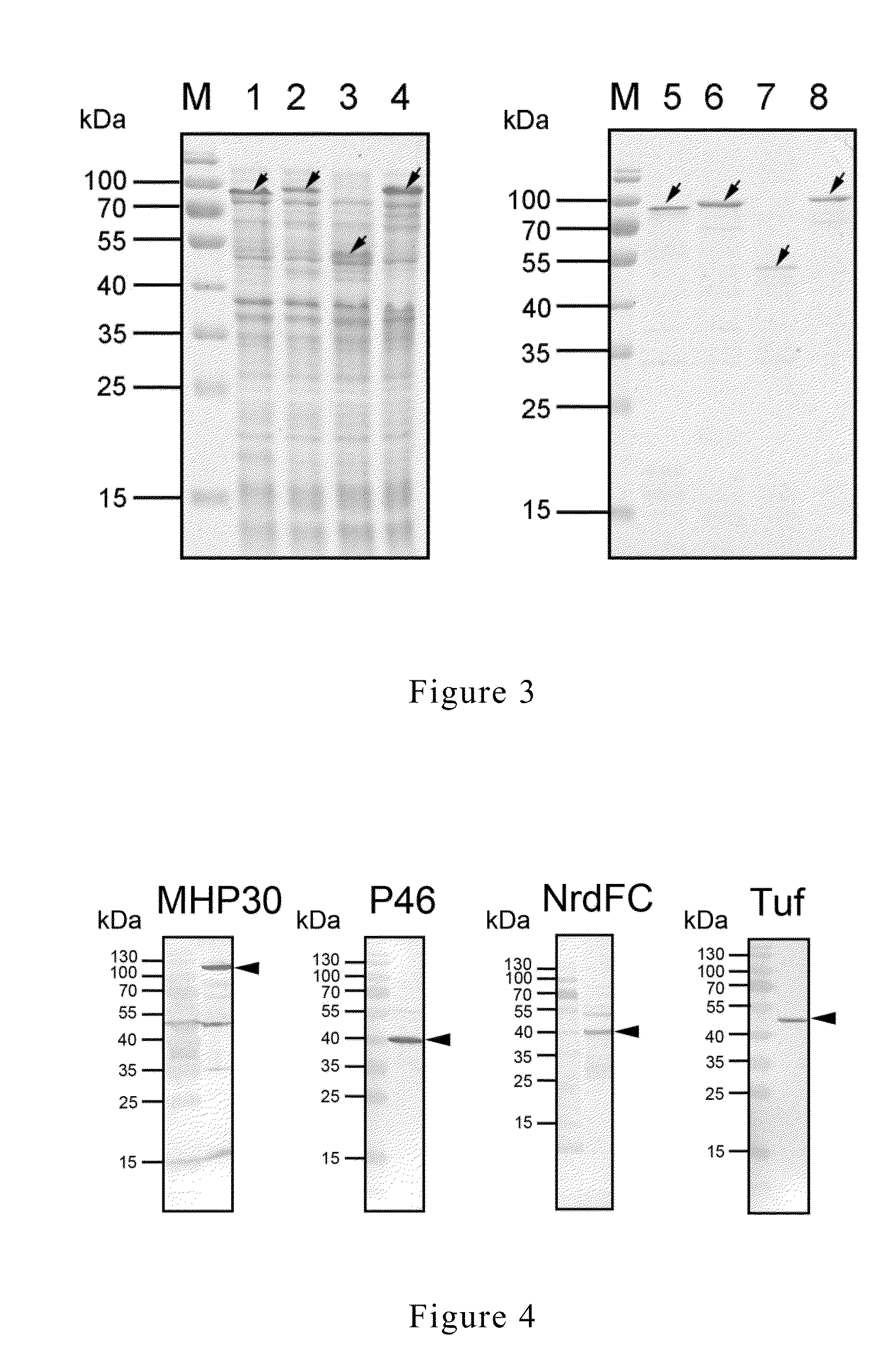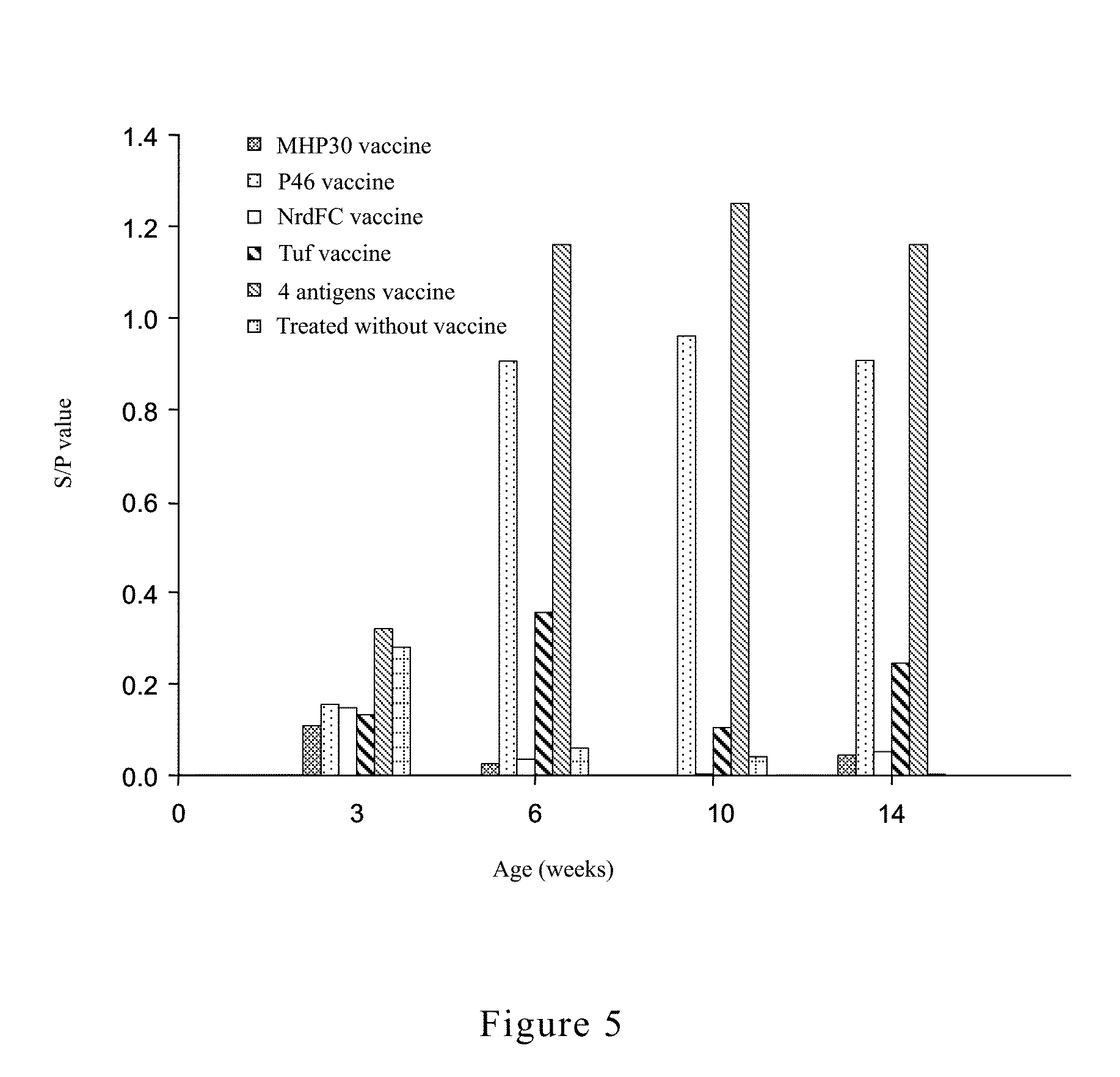Composition for preventing mycoplasma spp. infection
a technology of mycoplasma and compound, which is applied in the direction of bacterial antigen ingredients, depsipeptides, peptide/protein ingredients, etc., can solve the problems of economic damage, only being used for treatment purposes in medicine administration, and difficult to meet the needs of prevention, so as to increase the production capacity of preparing the required vaccines and enhance the immune induction
- Summary
- Abstract
- Description
- Claims
- Application Information
AI Technical Summary
Benefits of technology
Problems solved by technology
Method used
Image
Examples
example 1
Strains and Culture Thereof
[0055]Current researches identified there are seven kinds of Mycoplasm spp. isolated from swines: Mycoplasm hyopneumoniae, Mycoplasma hyorhinis, Mycoplasma hyosynoviae, Mycoplasma flocculare, Mycoplasma hyopharyngis, Mycoplasma sualvi, and Mycoplasma bovigenitalium (Gourlay et al., 1978; Blank et al., 1996; Assuncao et al., 2005). Among them, Mycoplasm hyopneumoniae is the main pathogen causing swine mycoplasma pneumonia. The infection rate is somewhere in between 25% to 93%. Therefore, the present research used Mycoplasm hyopneumoniae (Mycoplasm hyopneumoniae, PRIT-5) as the source of antigen gene. In addition, the present research used Escherichia coli JM109 as the host for gene cloning and Escherichia coli BL21 (DE3) as host for protein expression.
[0056]M. hyopneumoniae was cultured by using Friis medium (Friis et al., 1975). Escherichia coli (E. coli) strains were cultured by using LB medium (Luria-Bertani). Proper amount of antibiotic and / or 1.5% of a...
example 2
Cloning of M. hyopneumoniae Antigen Gene
[0057]Specific primers were designed for different antigen genes (Table 1). The genome of M. hyopneumoniae was used as template and amplification was conducted by using the aforesaid primers. The details of gene amplification and cloning were described in the following paragraphs:
TABLE 1Primer sets for amplifying the desired genes.DesiredgenesSequence of primer (5′ to 3′)MHP30MHP30F (SEQ ID NO 09):GATATAGGATCCGCAAAATTAGACGATAATCTTCAGTATTCAMHP30R (SEQ ID NO 10):CAATATGTCGACTTAATTTTTACCTTGTTTTTTAATGATTTCGTCP46P46F (SEQ ID NO 11):GATATAGGATCCATGAAAAAAATGCTTAGAAAAAAATTCTTGP46R (SEQ ID NO 12):CAATATGTCGACTTAGGCATCAGGATTATCAACATTAGCNrdFCNrdCF (SEQ ID NO 13):GATATAGGATCCGATCTATTATATAAACTAATTGAATTAGAAAAAGATTATCNrdCR(SEQ ID NO 14):CAATATGTCGACTTAAAACTCCCAATCTTCATCTTCGTufTufF (SEQ ID NO 15):GATATAGGATCCATGGCAGTTGTTAAAACGACAGGAAAATufR (SEQ ID NO 16):CAATATGTCGACTTATTTAATAATTTCGGTAACTGTTCCGGCA*GGATCC: BamHI cutting site; GTCGAC: SalI cutting site
1. Extrac...
example 3
Point Mutation and Cloning of P46 Gene
[0064]P46 has three TGA codons. TGA codon was translated as tryptophan in Mycoplasma spp. but as stop codon in E. coli. In order to prevent from failure in using E. coli expression system for producing the whole desired protein, point mutation must be made to P46 gene's TGA codon to replace them as TGG, which is translated by E. coli as tryptophan.
[0065]The principle for designing mutation primers for the point mutation is the mutation point shall be located in the centre area of the primer and the Tm of the primers shall be higher than 78° C. The Tm of the primers can be calculated by the formula provided by Invitrogene: Tm=81.5+0.41 (% GC)−675 / N−% mismatch. “% GC” stands for the percentage of G and C of the primer concerned; “N” stands for the length of the primer concerned; “% mismatch” stands for the percentage of the base to be mutated of the primer concerned. The primers used for point mutation of P46 gene were listed in the following Tabl...
PUM
| Property | Measurement | Unit |
|---|---|---|
| concentration | aaaaa | aaaaa |
| concentration | aaaaa | aaaaa |
| concentration | aaaaa | aaaaa |
Abstract
Description
Claims
Application Information
 Login to View More
Login to View More - R&D
- Intellectual Property
- Life Sciences
- Materials
- Tech Scout
- Unparalleled Data Quality
- Higher Quality Content
- 60% Fewer Hallucinations
Browse by: Latest US Patents, China's latest patents, Technical Efficacy Thesaurus, Application Domain, Technology Topic, Popular Technical Reports.
© 2025 PatSnap. All rights reserved.Legal|Privacy policy|Modern Slavery Act Transparency Statement|Sitemap|About US| Contact US: help@patsnap.com



